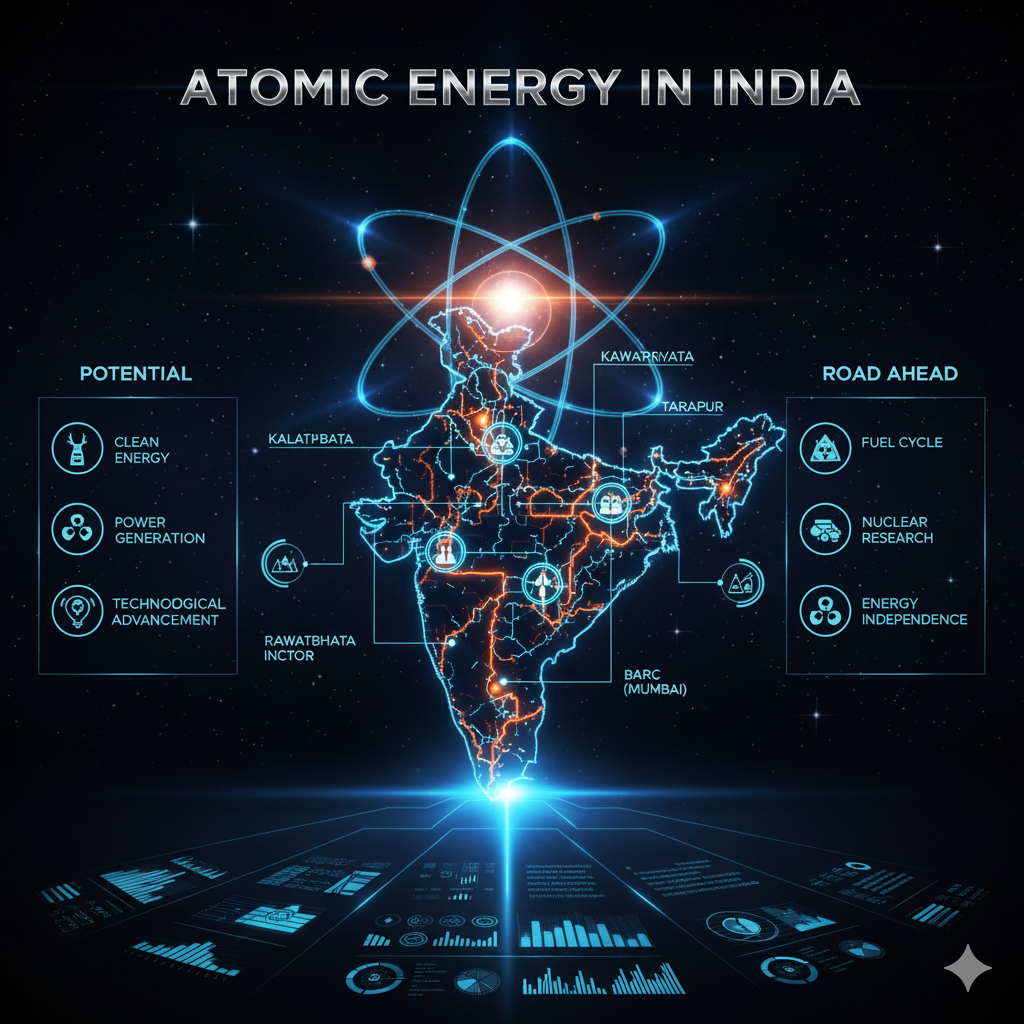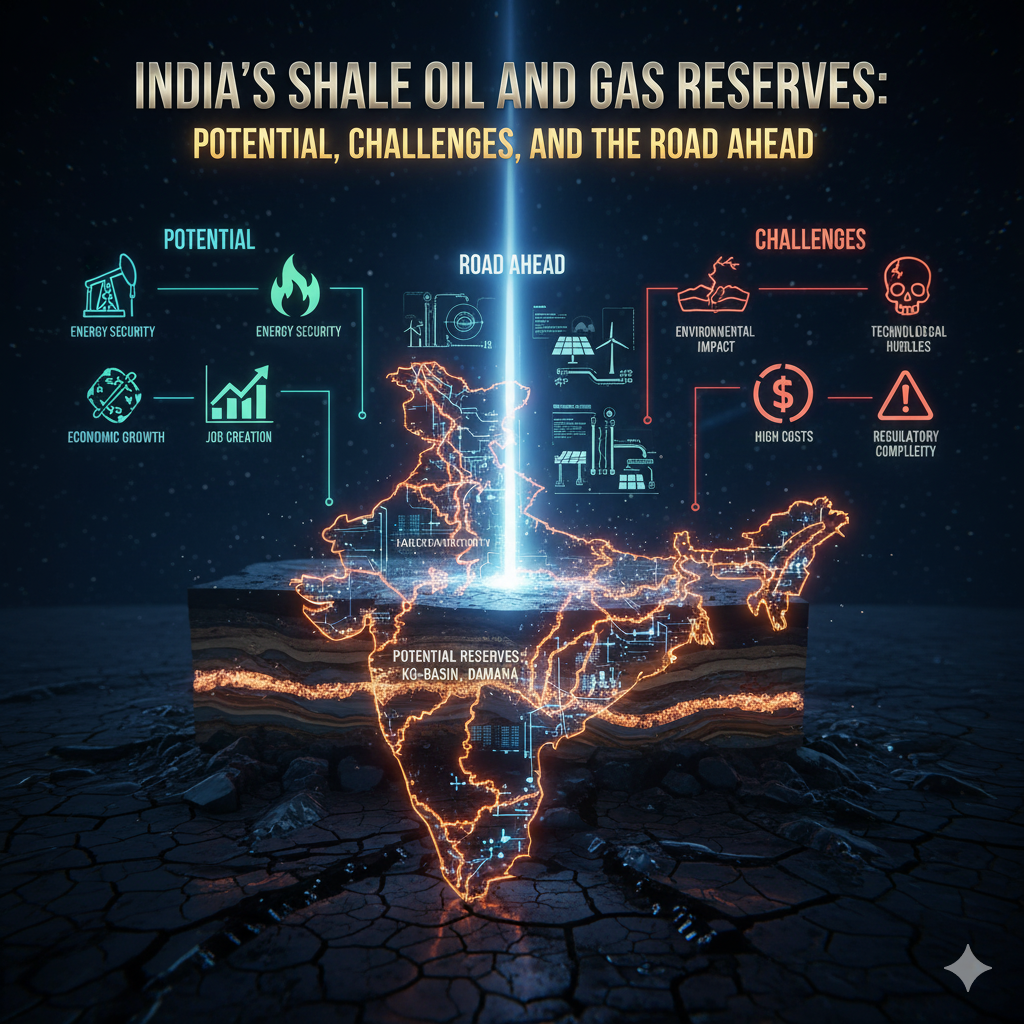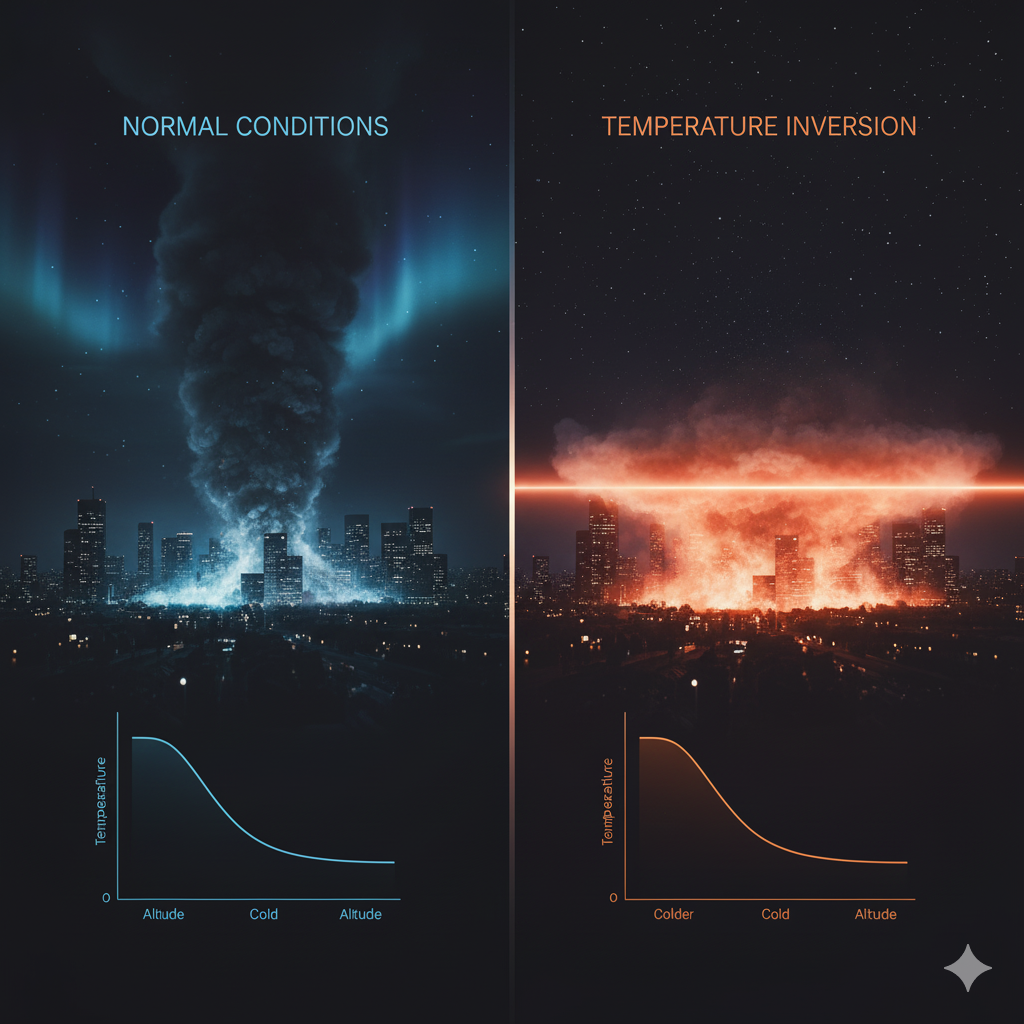Introduction
The global energy scenario is undergoing a profound transformation. With the ever-growing scarcity of fossil fuels like coal, oil, and natural gas, and the environmental challenges associated with their use, nations are seeking alternative and sustainable sources of energy. Among these, atomic energy — also called nuclear energy — has emerged as a vital option due to its high energy density, low greenhouse gas emissions, and potential for large-scale power generation.
India, as a rapidly developing nation with increasing energy demands, is increasingly focusing on nuclear power to supplement conventional energy sources. However, the availability of raw materials, technological expertise, and environmental considerations are crucial for harnessing atomic energy efficiently. This essay provides a detailed examination of the raw materials required for nuclear energy production, their availability in India and globally, and the implications for India’s energy strategy.
1. Understanding Atomic Energy
Atomic energy is generated by exploiting the energy stored in the nucleus of atoms. This can occur through two primary processes: nuclear fission and nuclear fusion.
- Nuclear fission: Splitting of heavy atomic nuclei (like uranium-235 or plutonium-239) releases enormous energy. Fission is the primary method used in nuclear power plants today.
- Nuclear fusion: Combining light nuclei (like isotopes of hydrogen) to form a heavier nucleus, releasing energy. Fusion is the principle powering the Sun and stars, and while it holds immense promise, it is not yet commercially viable.
Nuclear reactors use fuel, moderators, and coolants as key components. The fuel provides the fissile material, while moderators like heavy water or graphite slow neutrons, and coolants such as water or liquid metals transfer heat to generate steam for electricity.
2. Raw Materials Required for Nuclear Energy
The main raw materials for nuclear energy generation include uranium, thorium, and plutonium, with minor contributions from other isotopes. Each of these materials has unique characteristics, availability, and role in nuclear reactors.
2.1 Uranium
Uranium is the primary fuel in most nuclear reactors worldwide. Key points include:
- Isotopes: Uranium-235 (fissile) and Uranium-238 (fertile) are most important. U-235 can sustain chain reactions, while U-238 can be converted into plutonium-239.
- Forms: Found in uranium ore as uraninite (UO₂) or other minerals.
- Usage: Predominantly in Pressurized Heavy Water Reactors (PHWRs) and Light Water Reactors (LWRs).
2.1.1 Availability in India
India has limited uranium reserves, mostly in:
- Jharkhand (Singhbhum, Jaduguda, Bhatin mines)
- Arunachal Pradesh (Dapda, Lambapur)
- Rajasthan (Gogi, Rohil)
- Andhra Pradesh (Nallamala Hills)
The total identified uranium reserves are estimated at ~1,00,000 tons, sufficient for short to medium-term nuclear power generation, but not enough for a large-scale expansion without imports.
2.1.2 Global Availability
Major uranium-producing countries include:
- Kazakhstan – the largest global producer (~40% of global production)
- Canada – high-grade uranium mines (Athabasca Basin)
- Australia – extensive reserves but limited production
- Namibia, Niger, Russia, Uzbekistan – significant contributors
The world has estimated 6.1 million tons of economically recoverable uranium, which could support current nuclear energy demand for several decades.
2.2 Thorium
Thorium is a fertile material, converting into fissile uranium-233 upon neutron absorption. It is particularly important for India’s nuclear strategy due to abundant thorium reserves.
- Advantages:
- Abundant and widely distributed.
- Produces less long-lived radioactive waste compared to uranium.
- Reduces dependency on imported uranium.
2.2.1 Availability in India
India possesses ~950,000 tons of monazite-derived thorium, mainly in:
- Kerala and Tamil Nadu – coastal monazite sands.
- Odisha, Andhra Pradesh, and Gujarat – inland thorium-bearing deposits.
India’s thorium reserves are the second largest globally, forming the backbone of India’s three-stage nuclear program, aimed at eventually using thorium as the primary fuel.
2.2.2 Global Availability
- United States, Norway, Brazil, and Australia also have notable thorium deposits.
- Global thorium reserves are estimated at ~6.3 million tons, much of it concentrated in monazite sands.
- Despite abundance, thorium utilization is limited due to technical challenges in reactor design.
2.3 Plutonium
Plutonium-239 is a man-made fissile material, produced in reactors from U-238. It is a key fuel for fast breeder reactors (FBRs) and nuclear weapons.
- Role: In India, plutonium from PHWRs is used in fast breeder reactors to generate additional energy and produce U-233 from thorium.
- Plutonium is highly radioactive and requires careful handling and storage.
2.4 Heavy Water and Moderators
For Pressurized Heavy Water Reactors (PHWRs), heavy water (D₂O) is used as a moderator to slow down neutrons.
- India is largely self-sufficient in heavy water production, with plants in Manuguru, Tuticorin, and Hazira.
- Heavy water allows use of natural uranium, reducing dependency on enriched uranium.
2.5 Other Materials
- Graphite: Acts as a moderator in some reactor types.
- Zirconium alloys: Used in fuel cladding due to high corrosion resistance.
- Coolants: Water, liquid sodium (for fast reactors), or gases like CO₂.
These materials are generally accessible, but technological expertise is essential for their effective utilization.
3. Global Nuclear Energy Landscape
Nuclear energy provides ~10% of the world’s electricity, with varying dependency among countries:
- United States: ~30% of global nuclear capacity.
- France: ~70% of electricity from nuclear power.
- China and Russia: Rapidly expanding nuclear programs.
- Japan, South Korea: Advanced nuclear infrastructure.
Globally, uranium demand is projected to increase, especially in countries pursuing low-carbon energy targets.
3.1 Uranium Supply and Demand
- Annual uranium consumption is ~67,000 tons (as of 2023).
- Known reserves are adequate for 50–60 years at current consumption rates.
- Expansion of nuclear power programs may require increased mining or imports, particularly for countries with limited domestic uranium.
3.2 Thorium Prospects
- Thorium is largely untapped globally.
- India’s focus on thorium reactors may give it a strategic advantage, reducing reliance on imported uranium.
- Development of Advanced Heavy Water Reactors (AHWRs) is central to India’s thorium utilization plans.
4. India’s Nuclear Program and Resource Strategy
India’s nuclear program is designed around three stages to maximize domestic resources:
Stage 1: Pressurized Heavy Water Reactors (PHWRs)
- Uses natural uranium fuel.
- Produces plutonium as a by-product for Stage 2.
Stage 2: Fast Breeder Reactors (FBRs)
- Uses plutonium from Stage 1.
- Breeds more fissile material from thorium, expanding fuel availability.
Stage 3: Advanced Heavy Water Reactors (AHWRs)
- Uses thorium and uranium-233.
- Ensures long-term energy security using abundant thorium.
This strategy aligns with India’s limited uranium but abundant thorium reserves, aiming for sustainable nuclear energy production for decades.
5. Challenges in Harnessing Atomic Energy
Despite advantages, nuclear energy faces multiple challenges:
5.1 Resource Limitations
- India’s uranium reserves are limited, requiring imports from Canada, Australia, and Kazakhstan.
- Thorium-based reactors require advanced technology, still under development.
5.2 Safety Concerns
- Nuclear accidents, though rare, have global environmental impacts (e.g., Chernobyl, Fukushima).
- Radioactive waste management remains a critical issue.
5.3 Technological and Economic Challenges
- Nuclear reactors are capital intensive.
- Requires skilled workforce, stringent safety standards, and technological expertise.
5.4 International Regulations
- Nuclear material trade is controlled under the Nuclear Non-Proliferation Treaty (NPT) and IAEA guidelines.
- India, as a non-signatory to NPT, relies on civil nuclear agreements for uranium imports.
6. Future Prospects and Sustainability
6.1 Thorium-Based Expansion
- India’s thorium reserves ensure long-term energy security.
- Development of Advanced Heavy Water Reactors (AHWRs) is critical for full utilization.
6.2 Integration with Renewable Energy
- Nuclear energy complements solar and wind, providing base-load power.
- Reduces dependency on fossil fuels, mitigating climate change.
6.3 Research in Fusion
- Global research in nuclear fusion promises an almost limitless energy source using hydrogen isotopes.
- India participates in International Thermonuclear Experimental Reactor (ITER), preparing for future fusion energy.
7. Conclusion
With the depleting reserves of fossil fuels and the urgent need for low-carbon energy, atomic energy is gaining strategic importance for India and the world.
- Uranium, thorium, and plutonium remain the primary raw materials for nuclear energy.
- India’s uranium resources are limited, but thorium reserves are among the largest globally, shaping its three-stage nuclear program.
- Globally, uranium reserves are adequate for several decades, but nuclear expansion will require careful resource management and technological advancement.
- Despite challenges such as safety, waste management, and high costs, nuclear energy remains a key component of sustainable energy strategy, providing reliable electricity and reducing carbon emissions.
For India, the focus on thorium and fast breeder reactors ensures energy self-sufficiency, reduces dependence on imported fuels, and positions the country as a global leader in advanced nuclear technology. The careful exploitation of raw materials, coupled with technological innovation, will determine the future of nuclear energy in India and the world.




